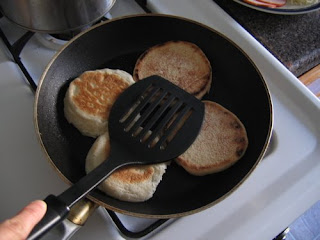This post first appeared in January 2010. (Um, you can probably tell by the first line.)
It’s the second full week of 2010. By now, you may be ten or eleven days into a resolution diet. You’re probably feeling really good about your progress. Chances are you lost a little weight. There’s a possibility you noticed a physical change already. You might even be thinking (and justifiably so): “I am the greatest person alive! Besides Eddie Vedder, I mean.”
Sadly, this may also have crossed your mind: “If eat one more salad, I’m going to set my face on fire.”
Sweet baby Jane, I hear you. When I began to change my eating habits, salads made up a big chunk of my diet. Office lunches were never-ending parades of the Caesar varietals (with light dressing, natch), and I got real tired, real fast of baby spinach. Then, I learned to cook and life got exponentially better. (Exponentially! That’s a lot.)
Anyway, once I started puttering around the kitchen, I realized the following:
lean meat + sauces, spreads, dips, salsas or dressings = excellence
With a creative topping, you can turn five ounces of pedestrian grilled chicken into a succulent celebration, a flavoral fooferaw, or even a scrumptious shindig. (Or any other gratuitously alliterative party.) Think of the meat as your canvas, and the accompaniment as your pretty rainbow paint of rainbows.
Take Gail Simmons’ Tomato and Avocado Salsa from Food & Wine, for example. You can use it as a dip for chips or veggies, sure. (The Super Bowl’s coming up, after all.) But on plain poultry, it becomes something else entirely: a tasty, filling, healthy dinner. Like almost all salsas, the recipe is staggeringly easy to make and constitutes a solid serving of vegetables. For $1 and 100 extra calories, that ain’t too shabby.
This week, when you’re choking down another round of Romaine, stop. Grab an avocado and a few grape tomatoes, grill a slice of chicken, and treat yourself to Tomato and Avocado Salsa. It’ll make the next few months a lot easier to stomach.
~~~
If you like this recipe, you might also dig:
~~~
Tomato and Avocado Salsa
Serves 4.
Adapted from Food & Wine.
1 1/2 cups grape tomatoes, halved or quartered
1 Hass avocado, diced small
1/4 cup onion, chopped small
1/2 small jalapeno, seeded and minced
1/8 cup cilantro, chopped
1/8 cup fresh lime juice
Kosher salt and freshly ground pepper
1) In a medium bowl, gently combine all the ingredients. Salt and pepper to taste. Stir again to combine. Serve on meat, chicken, fish, chips, cheese, or … anything, really.
NOTE: If you’d like a less chunky salsa, chop the tomatoes and avocado even smaller.
Approximate Calories, Fat, Fiber, and Price Per Serving
4 servings: 100 calories, 7.4 g fat, 3.7 g fiber, $1.04
Calculations
1 1/2 cups grape tomatoes, halved or quartered: 45 calories, 0 g fat, 0.1 g fiber, $2.50
1 Hass avocado, diced small: 322 calories, 29.5 g fat, 13.5 g fiber, $0.99
1/4 cup onion, chopped small: 13 calories, 0 g fat, 0.6 g fiber, $0.08
1/2 small jalapeno, seeded and minced: 9 calories, 0 g fat, 0.3 g fiber, $0.05
1/8 cup cilantro, chopped: negligible calories and fat, 0.1 g fiber, $0.25
1/8 cup fresh lime juice: 10 calories, 0 g fat, 0.2 g fiber, $0.25
Kosher salt and freshly ground pepper: negligible calories, fat, and fiber, $0.03
TOTAL: 399 calories, 29.5 g fat, 14.8 g fiber, $4.15
PER SERVING (TOTAL/4): 100 calories, 7.4 g fat, 3.7 g fiber, $1.04

 1) Coat a medium non-stick pan with cooking spray and heat on medium-high. Once pan is warm, place English muffins facedown on pan. Squish lightly with a spatula, so they get evenly browned.
1) Coat a medium non-stick pan with cooking spray and heat on medium-high. Once pan is warm, place English muffins facedown on pan. Squish lightly with a spatula, so they get evenly browned.





